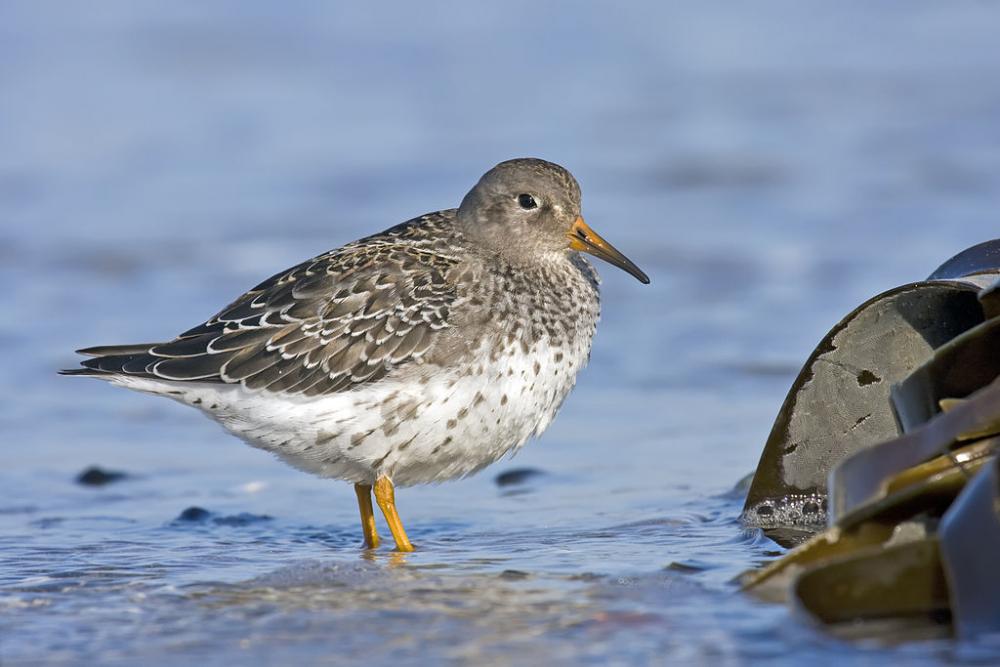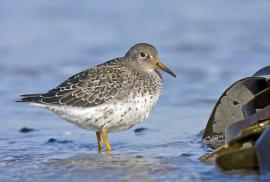Guide to Boreal Birds
Overview
These hardy birds remain through the coldest winters on rocks along the ocean front. Sometimes flocks of as many as 50 or more may be found on stone jetties. Purple Sandpipers are among the tamest of shorebirds and can be approached closely. In recent years, these birds have been found lingering later in spring, and a few nonbreeding birds have been reported even in summer as far south as Long Island. Their food consists of small crustaceans and mollusks such as periwinkles and other marine snails.
Description
9" (23 cm). A stocky sandpiper of wave-lashed rocks. Breeding birds finely streaked with brown and black on head and neck, heavily spotted on breast. Winter adults mainly dark slate, with whitish spot in front of eye, and yellow legs. Bill dull orange with black tip.
Voice
A single or double twit or twit-twit.
Nesting
4 buff eggs, spotted with brown, in a depression lined with grass and leaves on the ground.
Habitat
Breeds on tundra; rocky coasts and promontories in winter.
Range/Migration
Breeds on islands in High Arctic of Canada. Winters along East Coast from Newfoundland to Virginia. Also in Eurasia.



